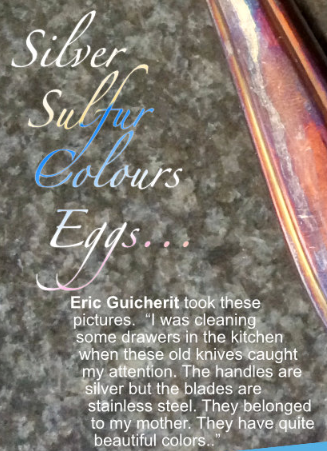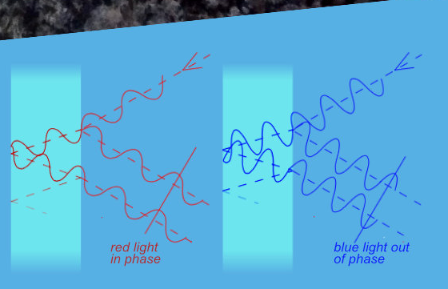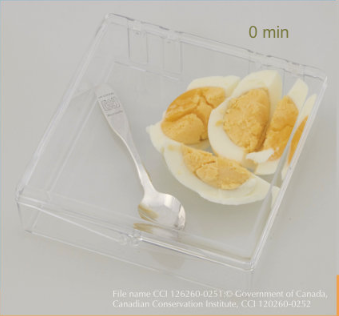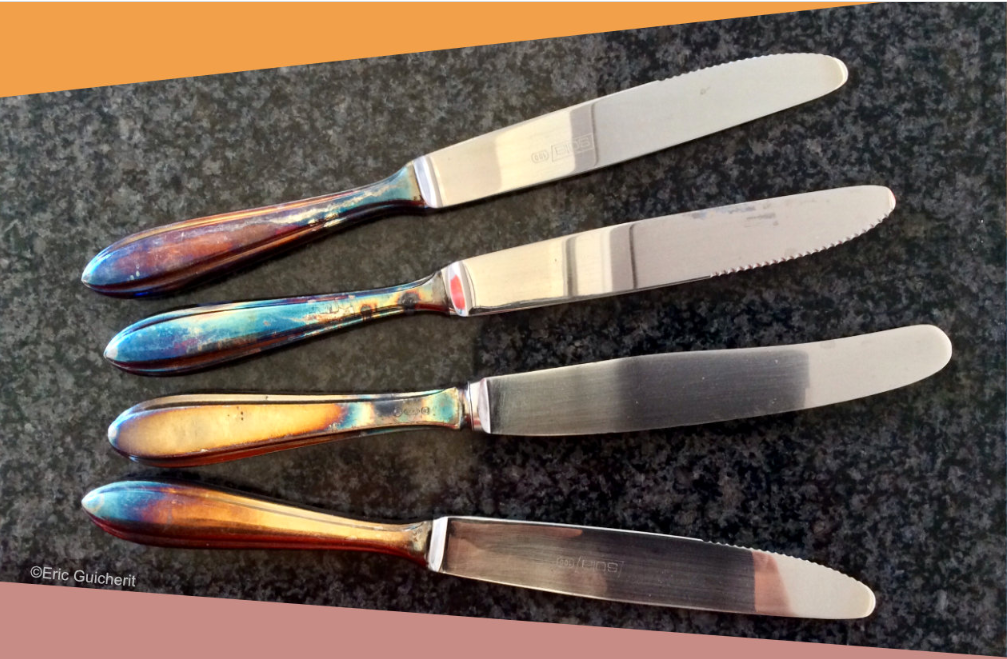Silver tarnish and thin film interference colours
Silver Tarnish and Thin Film Interference Colors: Exploring the Phenomenon
Have you ever noticed the mesmerizing colors that appear on silver objects as they tarnish? These captivating hues are a result of a fascinating optical phenomenon called thin film interference. In this article, we will delve into the intricate details of this phenomenon and understand why silver tarnish exhibits such vibrant colors.
When silver comes into contact with hydrogen sulfide (H2S) present in the air, it reacts to form a surface film known as silver sulfide. As the exposure to H2S continues, the film gradually thickens and eventually turns black. However, before reaching that stage, the silver sulfide film exhibits brilliant iridescent colors that capture our attention.
To comprehend the science behind this phenomenon, let's take a closer look at the cross-section of the silver sulfide film. When a red ray reaches the surface of the sulfide film, it undergoes partial external reflection. Some of the ray enters the film and reflects from the back silver-sulfide interface before leaving through the outer surface. The two outgoing rays, or waves, overlap and interfere with each other. In certain cases, like the example mentioned earlier, two red waves may be in phase and reinforce each other, resulting in a vibrant red color. On the other hand, shorter wavelength blue rays may leave out of phase, leading to the absence of light and a lack of blue color. This intricate interplay of light waves within the sulfide film gives rise to the striking red iridescence.
It is important to note that iridescence is not limited to a single color; rather, it encompasses a mixture of colors. The specific colors observed depend on both the viewing angle and the thickness of the sulfide film. As we change our perspective or alter the film's thickness, different colors emerge, creating a captivating display of iridescent hues.
Now, let's explore an intriguing experiment that demonstrates the effects of hydrogen sulfide gas on silver. By using eggs, which naturally emit hydrogen sulfide during the decomposition of their proteins, we can observe the tarnishing process firsthand. Here's how you can conduct the experiment:
- Find a small valuable piece of silverware and place it in a small box with a lid that fits reasonably well.
- Hard boil an egg, remove the shell, and rinse it under tap water. Without drying it, cut the egg into quarters while still warm.
- Place the egg quarters inside the box with the silverware and close the lid.
- Now, all you have to do is wait and watch.
After a few minutes, you will notice the silver turning yellow. As time passes and the sulfide film thickens, the color transitions through various shades of red and blue before ultimately transforming into a deep black.
The intriguing connection between silver tarnish and thin film interference colors has captured the attention of researchers and conservationists alike. For those interested in delving deeper into this topic, the Canadian Conservation Institute offers valuable insights and guidance on silver tarnishing and how to treat museum-quality silverware.
In conclusion, the phenomenon of silver tarnish and thin film interference colors provides us with a captivating display of iridescent hues. The interplay of light waves within the silver sulfide film, influenced by factors such as viewing angle and film thickness, gives rise to a range of vibrant colors. By conducting simple experiments using eggs and observing the tarnishing process, we can gain a better understanding of this fascinating optical phenomenon. So, the next time you come across a tarnished silver object, take a moment to appreciate the intricate beauty created by nature's play of light and chemistry.


Silver Sulfur Colours Eggs…
Eric Guicherit took these pictures. "I was cleaning some drawers in the kitchen when these old knives caught my attention. The handles are silver but the blades are stainless steel. They belonged to my mother. They have quite beautiful colors.."

Thin film interference and Sulfur produce the colours. Clean silver reacts with hydrogen sulfide H2S in the air to form a surface film of silver sulfide. With more H2S exposure the film thickens and eventually turns black. But before that the film glows with bright iridescent colours.
At right, cross sections through the film show what is happening. A red ray reaching the
sulfide surface is partially externally reflected. Part enters the film where it reflects from the back silver - sulfide interface and then leaves the outer surface.
The two outgoing rays (or waves) overlap and interfere. In the example, the two red waves are in phase and reinforce each other. At far left the shorter wavelength blue rays leave out of phase and there is no light. The sulfide film reflects red well but no blue - it glows with red iridescence.
That's an extreme example. Iridescence is a mixture of colours. The colours seen depend on the viewing angle and the sulfide film thickness.



More about silver tarnishing, the egg experiment and how to treat museum quality silverware at the excellent Canadian Conservation Institute website.
Egg experiment images are shown with kind permission of the Institute and are Government of Canada,
Canadian Conservation Institute.
Eggs give off hydrogen sulfide from decomposition of their proteins. Bad eggs give off a great deal!
Try this experiment to show the effects of the gas on silver.
Find a small valuable piece of the family silver and put it in a small box with a
reasonably well fitting lid. Hard boil an egg. Take off the shell and rinse under the tap. Without drying it, cut into quarters and while still warm put them in the box.
Then wait and watch.
After a few minutes the silver turns yellow. As the sulfide film thickens it goes through reds and blues before finally turning black.

Note: this article has been automatically converted from the old site and may not appear as intended. You can find the original article here.
Reference Atmospheric Optics
If you use any of the definitions, information, or data presented on Atmospheric Optics, please copy the link or reference below to properly credit us as the reference source. Thank you!
-
<a href="https://atoptics.co.uk/blog/silver-tarnish-and-thin-film-interference-colours/">Silver tarnish and thin film interference colours</a>
-
"Silver tarnish and thin film interference colours". Atmospheric Optics. Accessed on November 23, 2024. https://atoptics.co.uk/blog/silver-tarnish-and-thin-film-interference-colours/.
-
"Silver tarnish and thin film interference colours". Atmospheric Optics, https://atoptics.co.uk/blog/silver-tarnish-and-thin-film-interference-colours/. Accessed 23 November, 2024
-
Silver tarnish and thin film interference colours. Atmospheric Optics. Retrieved from https://atoptics.co.uk/blog/silver-tarnish-and-thin-film-interference-colours/.